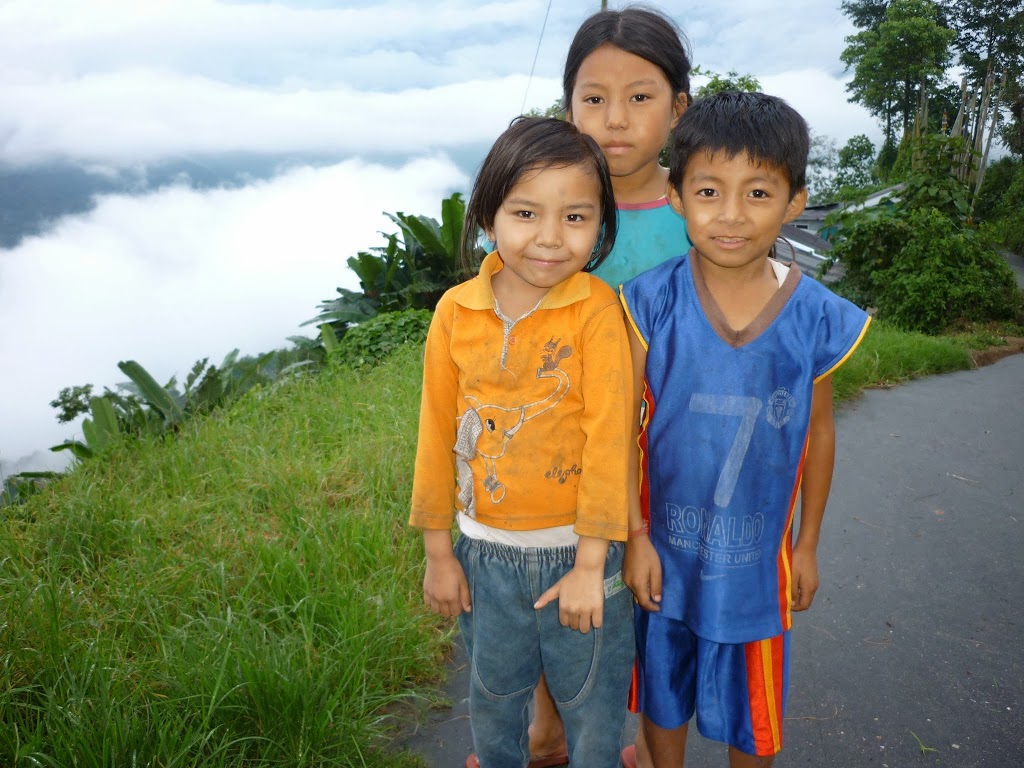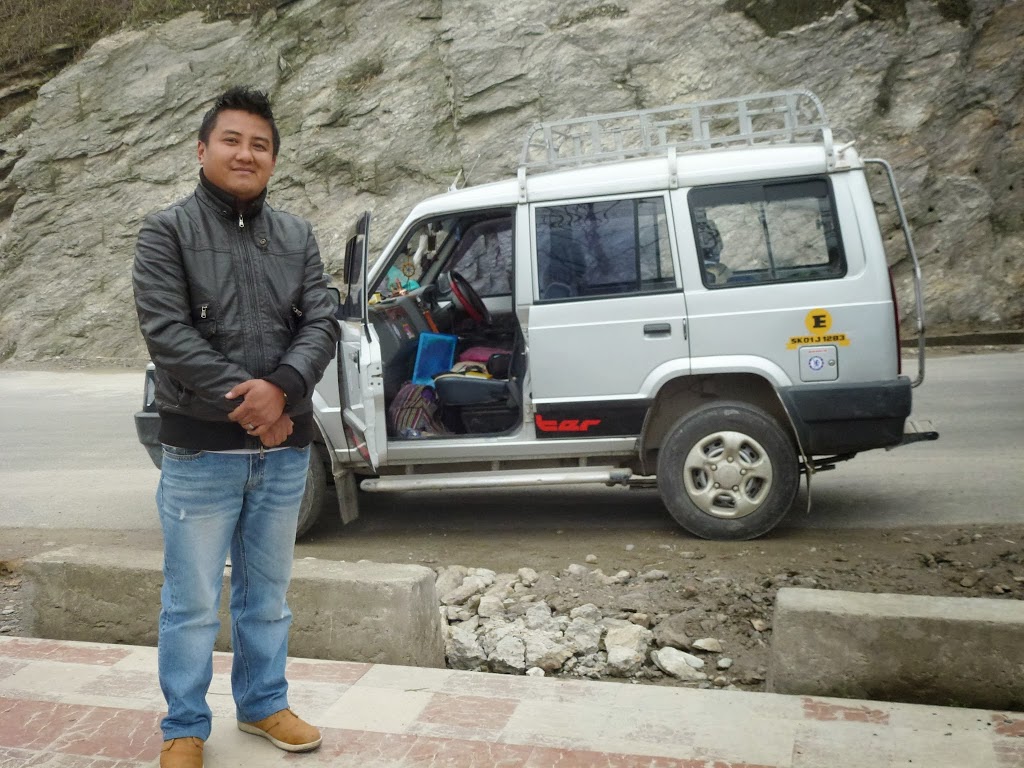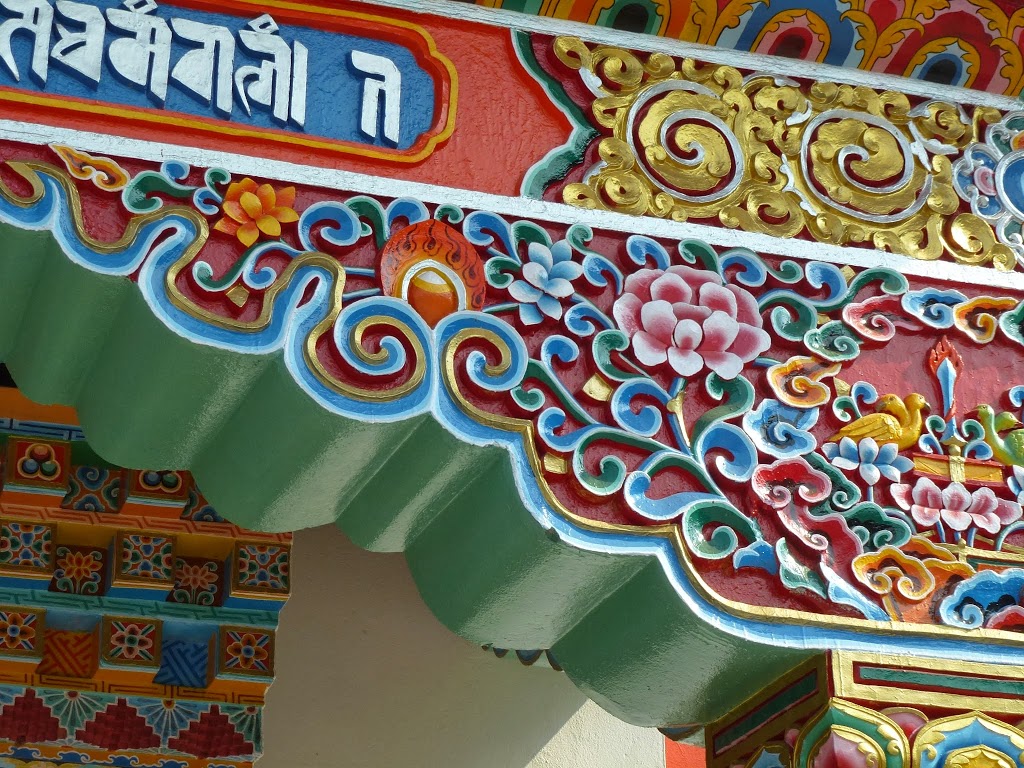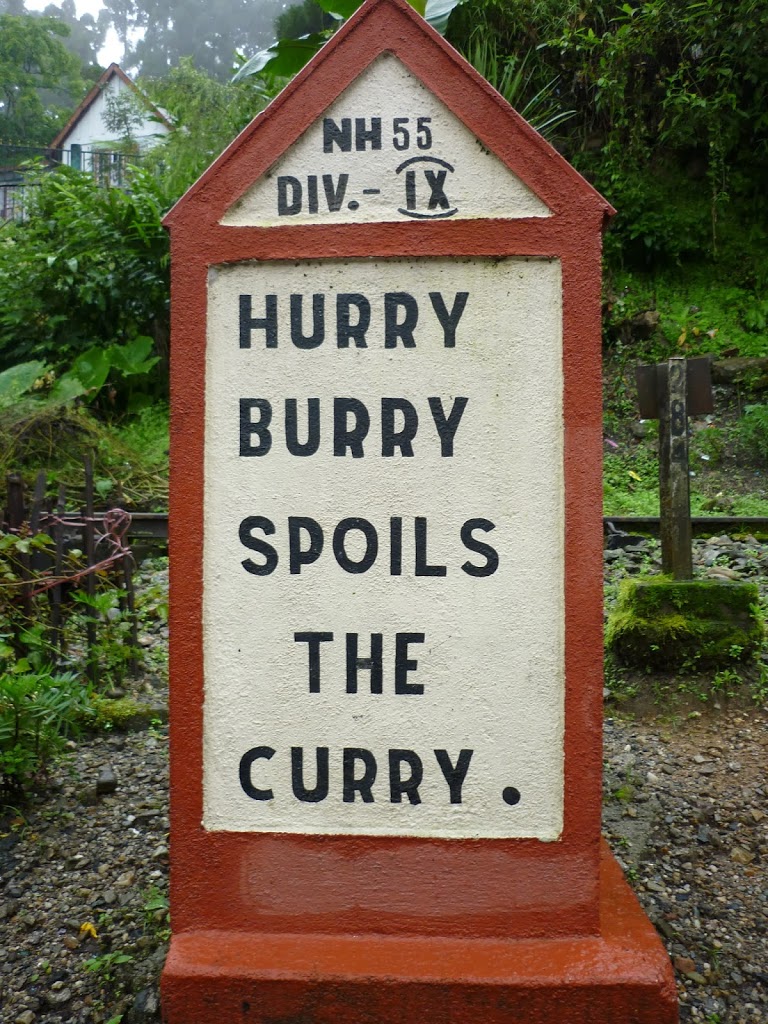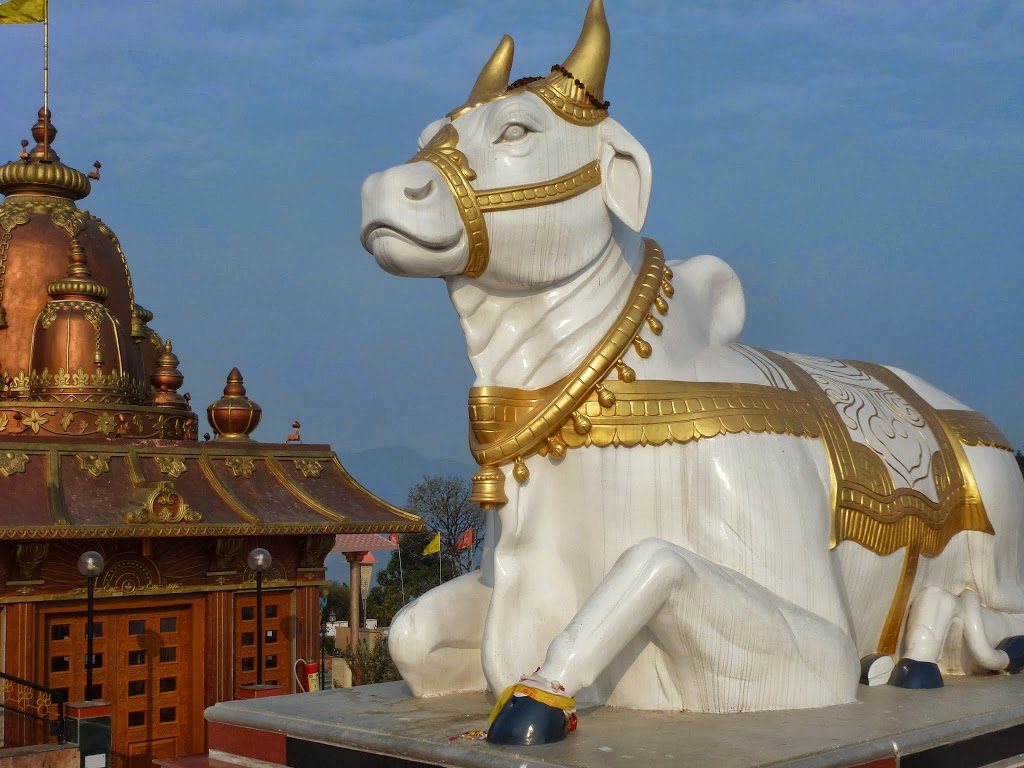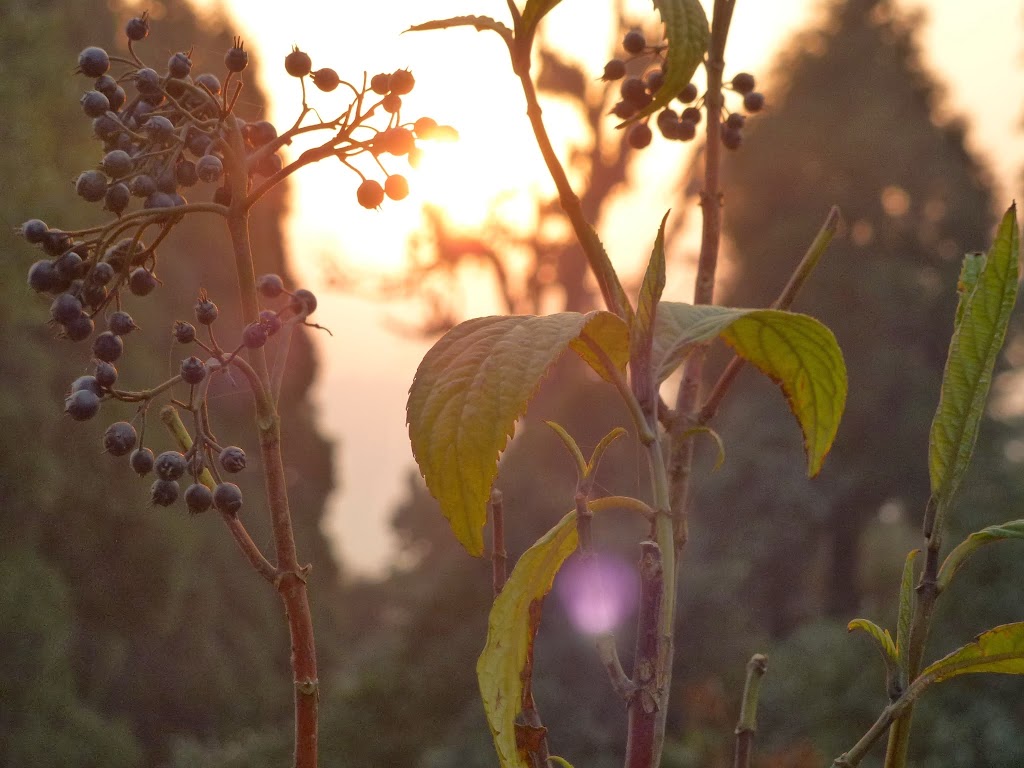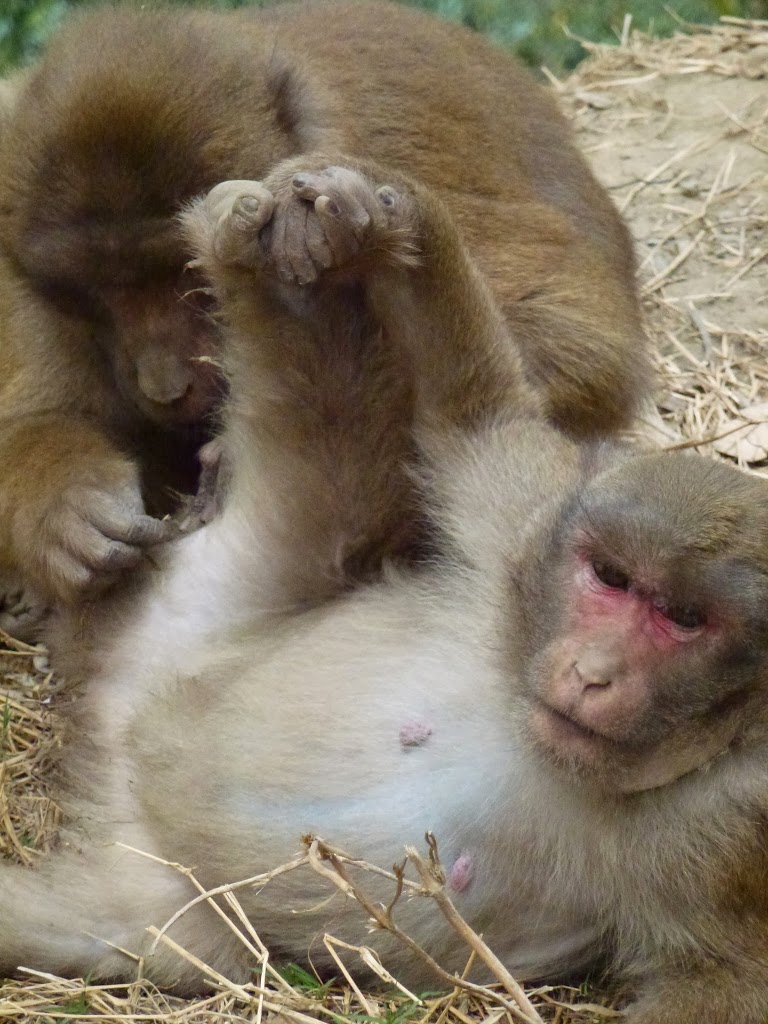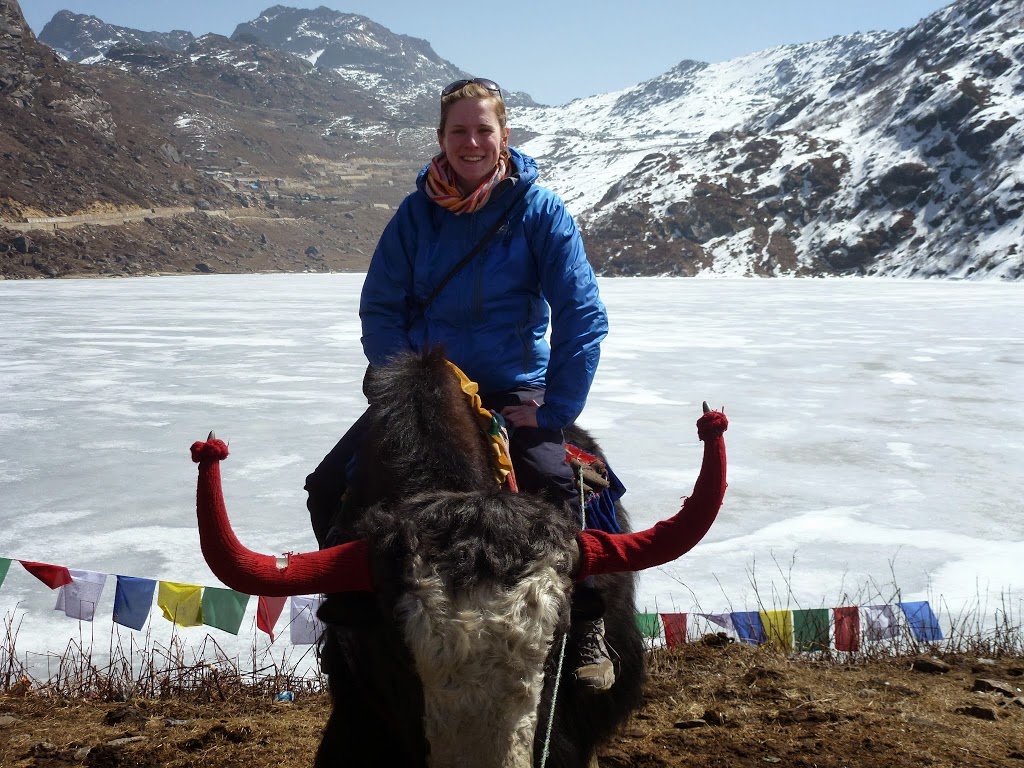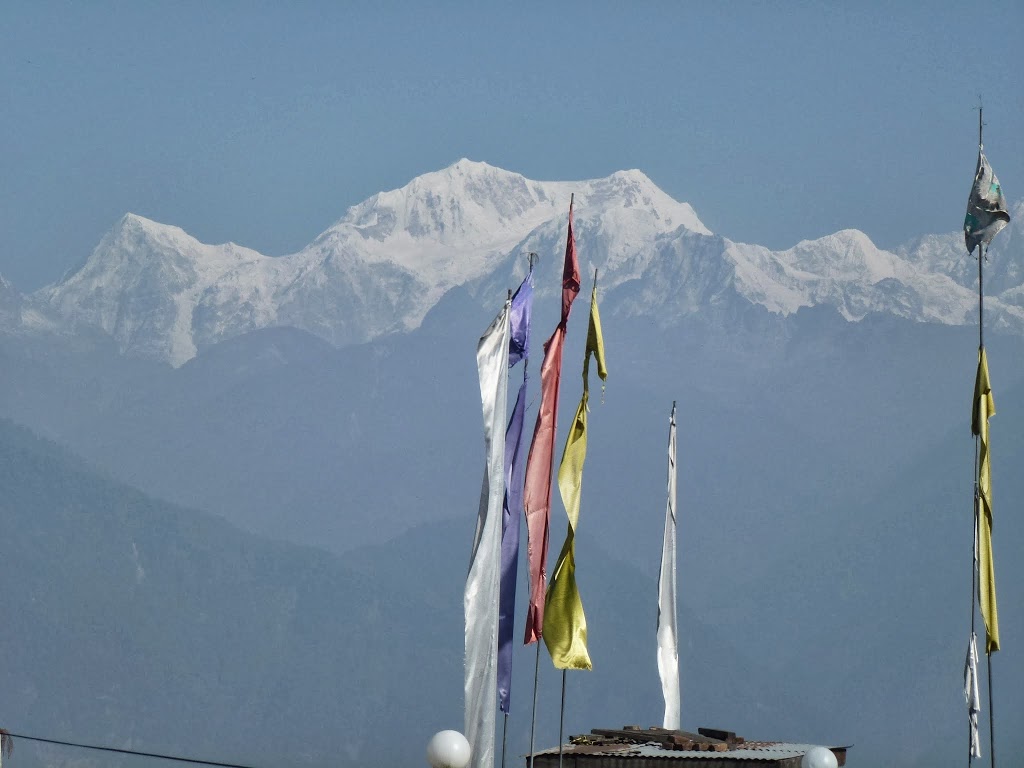Catherine Mottram is a good friend who is just completing her PhD at The Open University entitled:
“An integrated metamorphic and isotopic study of crustal extrusion along the Main Central Thrust, Sikkim Himalaya”. She recently had the first of several papers on this topic come out in the Journal of the Geological Society of London (
here). Many thanks to Catherine for her contribution.
Adventures of a geologist in the Himalaya
Back in May 2012 Chris wrote a blog post about
Augusto Gansser, Himalayan geologist and one of the first men to explore, map and document the magnificence of the Himalaya. Gansser’s massive contribution to the pool of knowledge about the Himalaya is unmatched and has inspired generations of geologists to probe the depths of the Himalayan orogen. The Himalaya represent a perfect natural laboratory to study how rocks are deformed, melted, squashed, mangled and spat back out during the phenomenally powerful process of orogenesis or mountain building. The Himalayan orogen has been forming since around 50 million years ago when the India and Asian plates started to collide due to the subduction of the intervening Tethys Ocean. The plates continue to converge at a rate of around 5cm a year, forming the highest mountains on Earth and some of the most interesting rocks in the world to study (or at least I would say that as I am a Himalayan geologist!).
 |
| View of Kanchenjunga, the third largest mountain in the Himalaya. |
I have followed in Gansser’s footsteps, travelling to the eastern Himalaya during my PhD to study the mechanics of how, where, when and why rocks are deformed during orogenesis. During my PhD I have focused on the Sikkim Himalaya, a small region of India located between Nepal and Bhutan. Until recently this area was relatively unstudied by geologists, due to restrictions on travel and the poor exposure in this part of the Himalaya. The Indian monsoon causes the eastern Himalaya to be blanketed in thick rain clouds for a portion of the year, this results in the flanks of the mountains and foothills to be covered in lush vegetation and tea plantations, good for wildlife and growing tasty Darjeeling tea, but not that good for looking at rocks! I have spent several months exploring the forests, tea plantations, hills and mountain passes of Sikkim, battling through rain, leeches and snow to discover some of the most beautiful and interesting rocks in the world. Here are some highlights of my travels in the ‘misty hills’ of Sikkim.
 |
| The foothills of the Sikkim Himalaya (the collective name for the Darjeeling Hills and Sikkim region of India) rise up impressively from the plains of India. The hills are covered in a mosaic of tea plantations, growing some very tasty tea, which has powered the fieldwork I completed in the Himalaya! |
 |
| Darjeeling Tea (in Darjeeling!) |
 |
| Darjeeling Hills |

In the Sikkim Himalaya, one of the largest thrust faults in the Himalaya (and the world), the Main Central Thrust, is folded and exposed as a wide arc across the area, making this region ideal for studying the mechanics of a large scale ductile structure. This thrust is one of the structures responsible for the crustal thickening and mountain building during Himalayan orogenesis. The thrust has brought rocks up from depths of around 20-30 km in the crust, where the rocks were once partially molten, deforming and metamorphosing in the collisional zone. Up to around 500 km of movement is thought to have occurred on the Main Central Thrust during a prolonged history during the Miocene. As movement mainly occurred at depth in the crust, a wide zone of ductile deformation is preserved beneath the Main Central Thrust in Sikkim and this is what I have studied during my PhD. As thrusting occurred, movement and deformation penetrated down into the underlying rocks forming a zone of inverted metamorphism. In the Sikkim Himalaya, some incredible Barrovian metamorphic minerals are therefore exposed at the surface.
 |
| Partially molten and ductily deformed rocks from the hanging wall of the Main Central Thrust. |
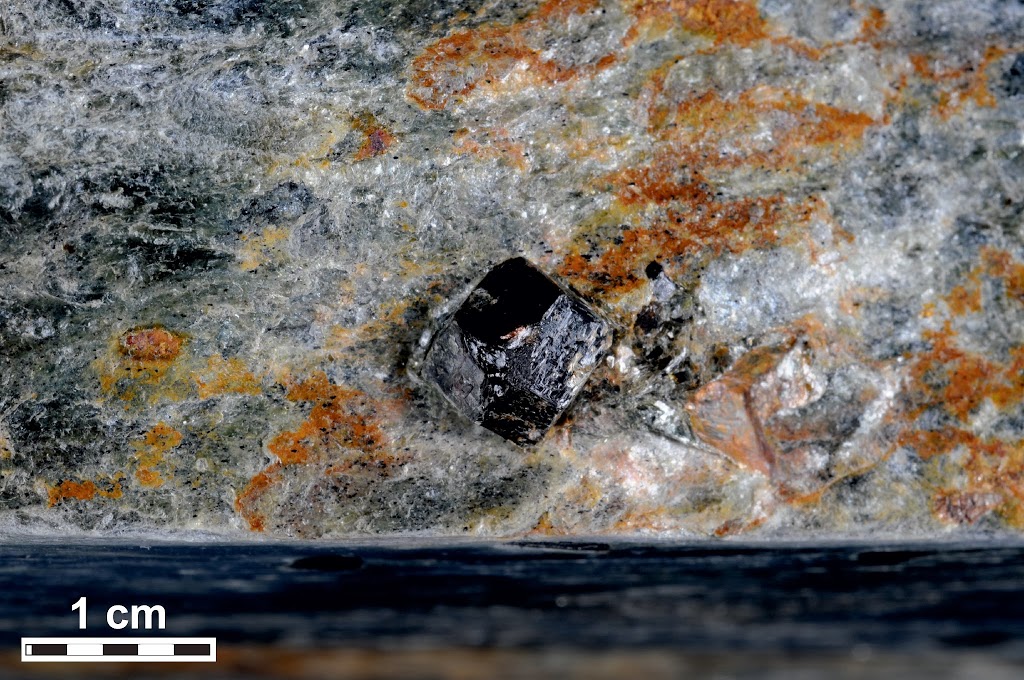 |
| euhedral garnet from a garnet mica schist |
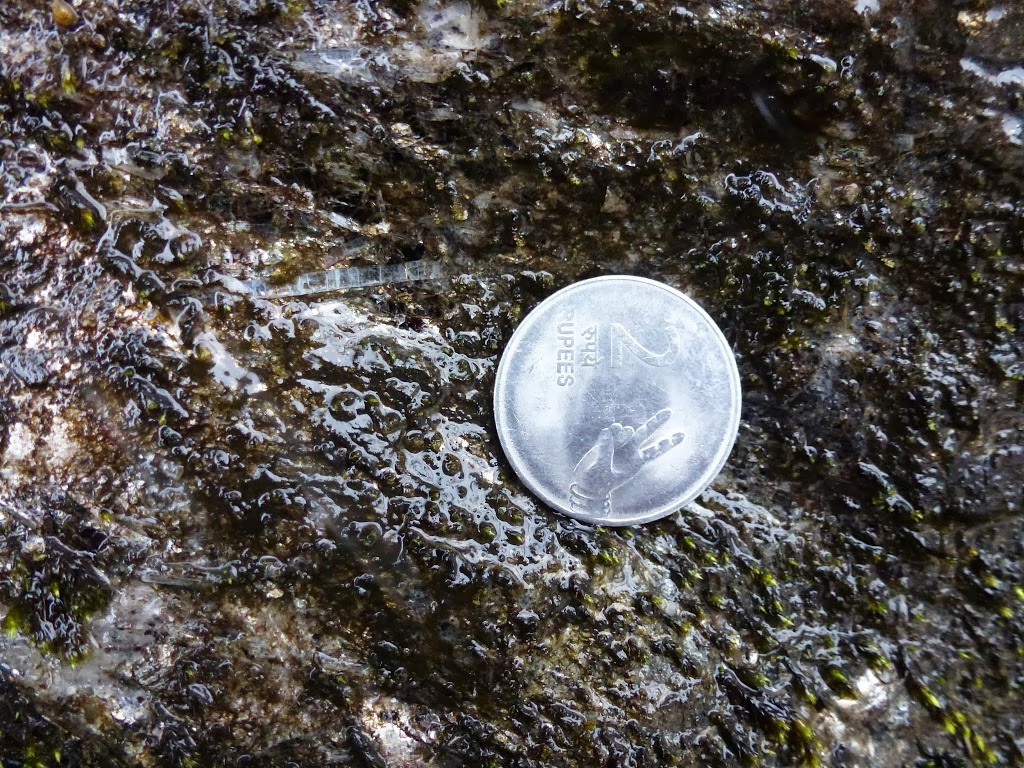 |
| blue kyanite blades in a garnet-staurolite-kyanite schist |
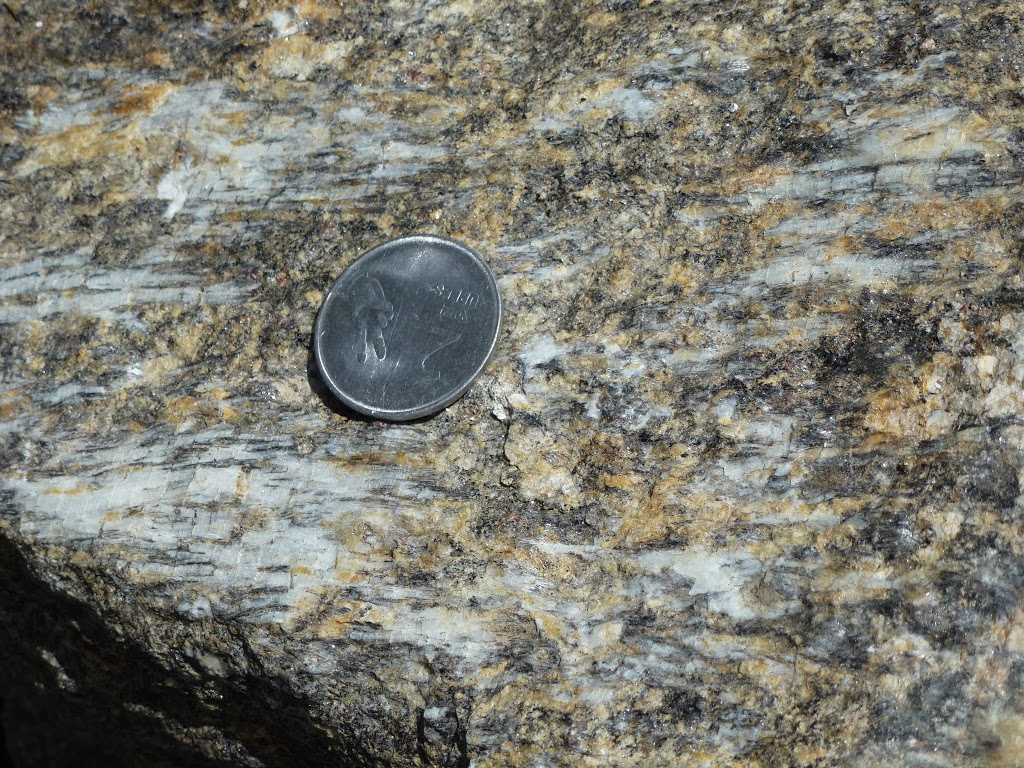 |
| sillimanite bundles in a sillimanite schist |
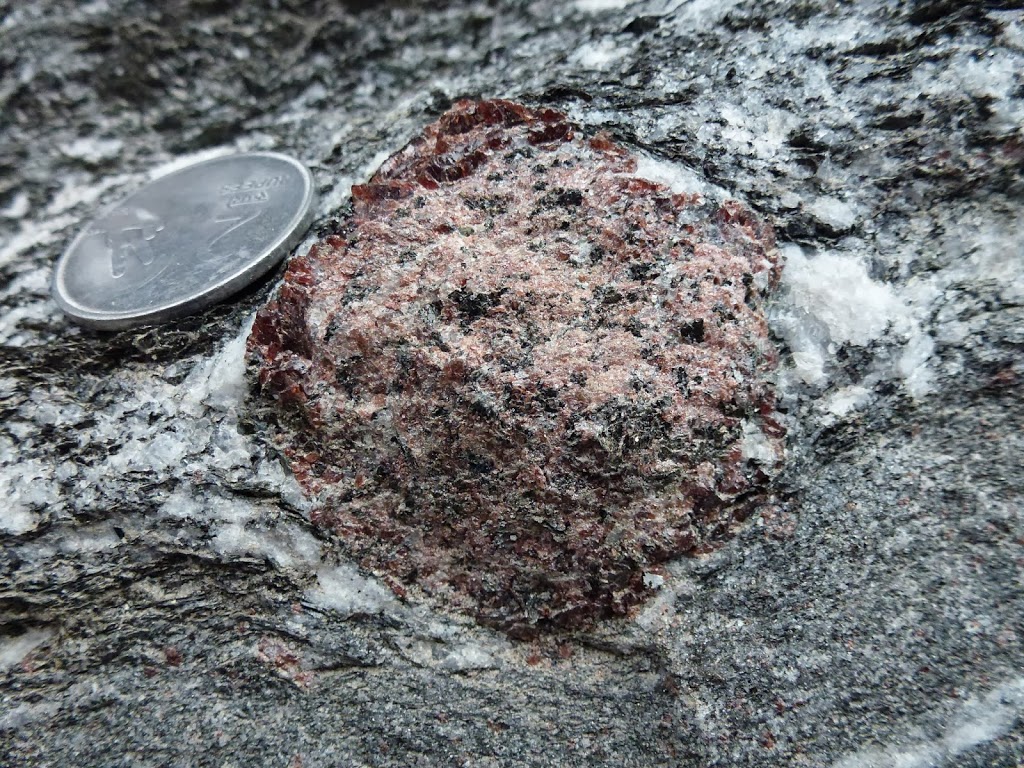 |
| large garnet, full of biotite inclusions and surrounded by a quartz pressure shadow |
My travels through the Sikkim Himalaya have allowed me to collect samples through the Main Central Thrust and through detailed lab work back in the UK I have been able to show how old these rocks are, how deep they have been in the crust, how quickly they have come to the surface and therefore allowed me to comment on how large ductile thrusts work. I have been able to show that before the Himalayan orogen was formed, the rocks either side of the Main Central thrust were once separated by vast distances across the margin of India. These rocks were juxtaposed during thrusting which occurred at a speed of around 2cm a year during the Miocene. During this ductile thrusting deformation progressively penetrated down into the underlying rocks creating the beautiful zone of Barrovian metamorphism in Sikkim. These rocks have therefore been on a journey which has taken them from the Indian shield down to depths of around 30 km and then fairly rapidly back up to the surface through the astonishing destructive power of continental collision. It’s through studying awesome rocks like those exposed in Sikkim that we can understand how these processes occurred.
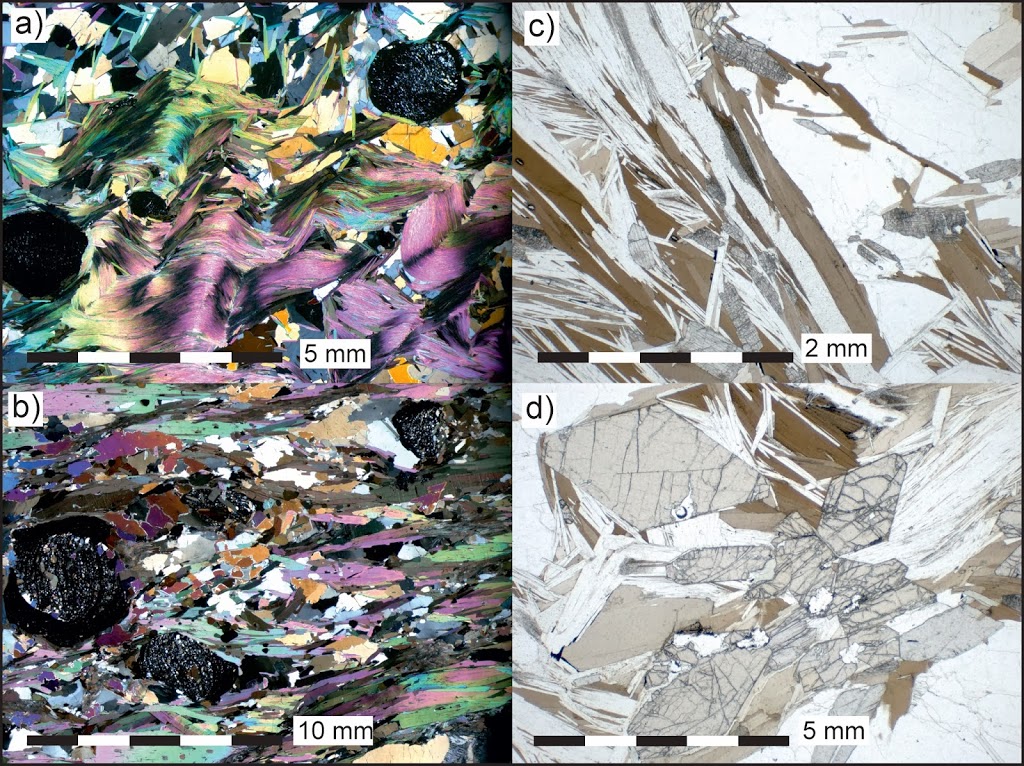 |
| Thinsection photograph of the beautiful metamorphic minerals and textures present in the rocks deformed by the Main Central Thrust. a) crenulated micas shown in cross polarised light, b) kyanite crystals shown in plane polarised light, c) zoned garnets shown in cross polarised light, d) euhedral staurolite minerals shown in plane polarised light. |
To sum up my experiences in the Himalaya, I have met some lovely, welcoming, curious and fascinating people throughout my trips, I have eaten some yummy food and had seen some truly awe-inspiring views, I have been immersed in ancient religions and customs, met some interesting creatures and found out some super amazing science!








![]() This work is licensed under a Creative Commons Attribution-NonCommercial-ShareAlike 4.0 International License.
This work is licensed under a Creative Commons Attribution-NonCommercial-ShareAlike 4.0 International License.




